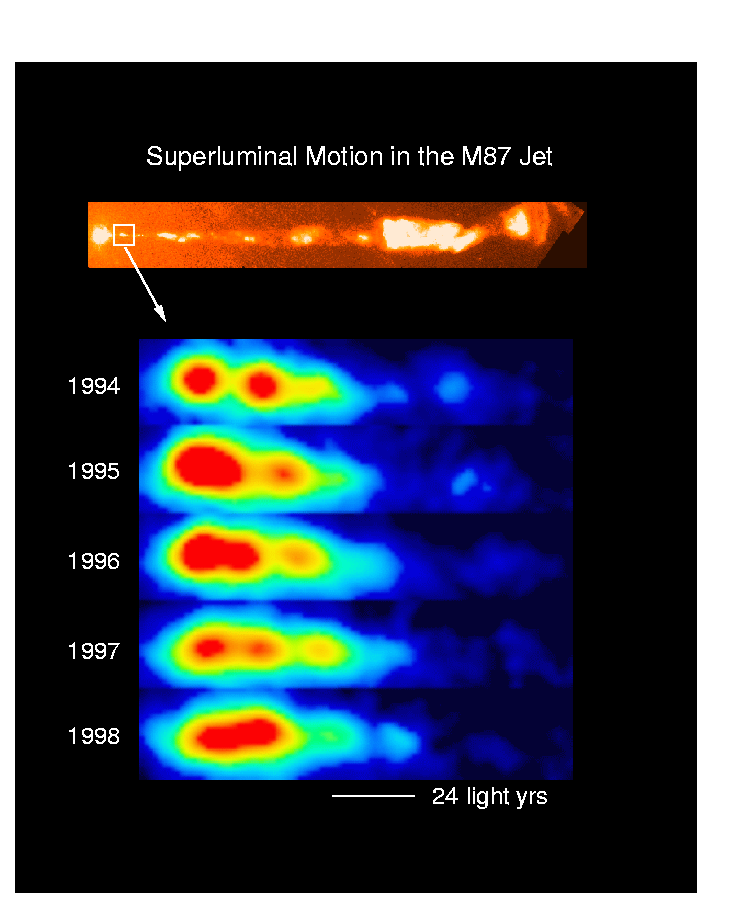(what should the spectrum of a galaxy look like?)
1943, Carl Seyfert published his study of some spiral galaxies with peculiar nuclei.
'peculiar' - bright, unresolved
They have emission lines on top of a strong continuum in their spectra!
(what could make a bright, varying, compact core of a Seyfert galaxy?)
The first discrete radio sources other than the Sun is Cygnus A.
Walter Baade and Rudolph Minkowski found the optical counterpart of Cyg A.
It is a peculiar (with emission lines) cD (supergiant elliptical with a diffuse envelope) galaxy.
Its redshift is 0.056, corresponding to a recession velocity of 16,000 km/sec, a distance of 170h-1 Mpc.
double-lobed radio sources
typical sizes are 50 kpc ~ 5 Mpc
the central galaxy is usually a giant elliptical, also with emission lines (NLRGs, BLRGs)
(Seyferts are radio-quiet spirals; radio galaxies are ellipticals)
1. hot spots
 [an inner section of the M87 jet]
[an inner section of the M87 jet]
2. superluminal motion (a movie of the M87 jet; see the next section for the cause of being superluminal.)
3. power-law spectra (nonthermal, very probably from synchrotron radition)
the formation (ejection and collimation) of jets is still poorly understood
one-sided jets
head-tail radio galaxies